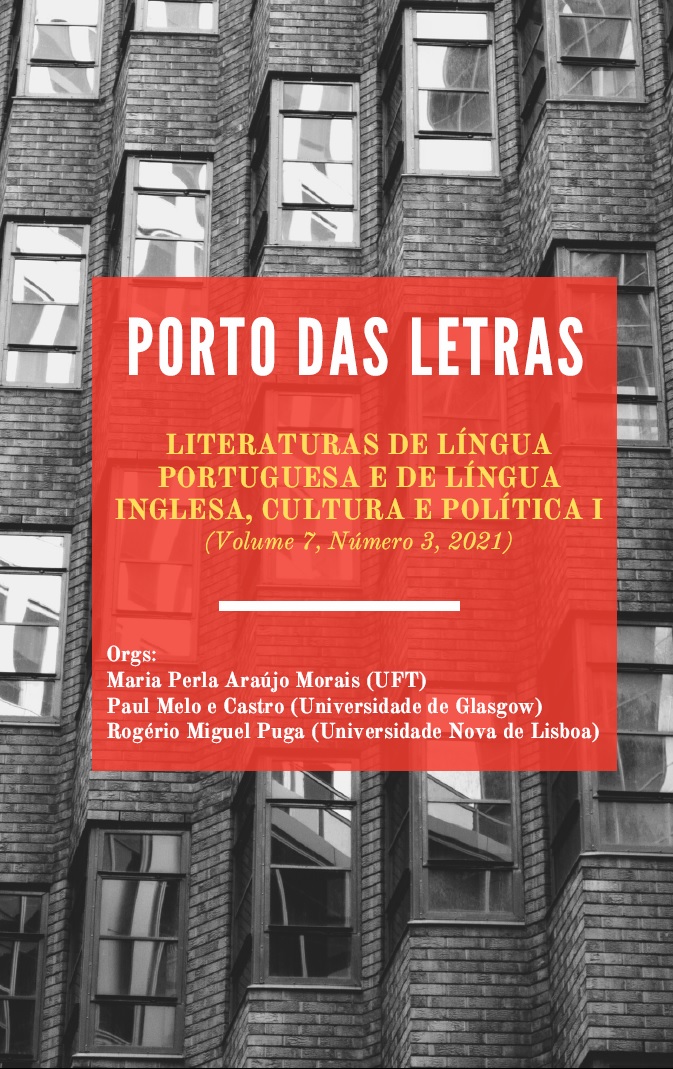A INFIDELIDADE DA MULHER MONSTRUOSA: A SUBVERSÃO DE PADRÕES DE FEMINILIDADE EM ZOFLOYA, OR THE MOOR (1806), DE CHARLOTTE DACRE
Keywords:
Gothic poetics, gender, monster, violence, sexualityAbstract
This work is dedicated to investigating how the violent woman, as a body unfaithful to the standards of femininity required of her class, subverts the docility and fragility of the so-called fair sex for her benefit. In doing so, by transposing the limits imposed on her and guaranteeing agency over her life, this woman undoes her position as an object in society and builds herself as a powerful and sovereign subject. To this end, this article rescues the gothic author Charlotte Dacre and her most celebrated work, Zofloya, or the Moor: a romance of the 15th-century (1806), to analyse how its protagonist, Victoria di Loredani, whom due to her cruelty and intense sexuality, plunges into her dark face and monsterises herself in order to conquer her desires. This process, however, is productive, because in doing so she opens her life to more active and free experiences so that she enjoys it fully.
References
BUTLER, J. Undoing Gender. Nova York: Routledge, 2004.
CIXOUS, H. Sorties: Out and Out: Attacks/Ways Out/Forays. In: CIXOUS, H; CLÉMENT, C. The Newly Born Woman. Trad. Besty Wing. Londres: I. B. Tauris & Co, 1996, p. 63-134.
COHEN, J. J. Monster Culture (Seven Theses). In: COHEN, J. J. Monster Theory. Minneapolis: University of Minnesota Press, 1996, p. 3-25.
CRACIUN, A. Fatal Women of Romanticism. Nova York: Cambridge University Press, 2003.
DACRE, C. Zofloya, or the Moor: a romance of the fifteenth-century. Nova York: Oxford University Press, 2008 [1806].
FOUCAULT, M. História da sexualidade 1: a vontade de saber. 4. ed. Trad. Maria Thereza da Costa Albuquerque e J. A. Guilhon Albuquerque. São Paulo: Paz & Terra, 2017 [1976].
GILMORE, D. Our Monsters, Ouservels. In: GILMORE, D. Monsters. Pensilvânia: University of Pennsylvania Press, 2003, p. 174-194.
HASTE, H. The Sexual Metaphor. Hertfordshire: Harvester Wheatsheat, 1993.
MICHASIW, K. I. Introduction. In: DACRE, C. Zofloya, or the Moor. Nova York: Oxford University Press, 2008 [1806].
MONTEIRO, M. C. Satã: um corpo mutante. In: PINHO, D.; MEDEIROS, F. (Orgs.) Literaturas de Língua Inglesa: leituras interdisciplinares. Vol. II. Rio de Janeiro: Letra Capital, 2017, p. 94-105.
PUNTER, D. The Abhuman Remains of the Gothic. In: PUNTER, D. The Gothic Condition. Cardiff: University of Wales Press, 2016, p. 96-105.
ROBLES, M. Mulheres, mitos e deusas. 2 ed. Trad. William Lagos e Débora Dutra Vieira. São Paulo: Aleph, 2019 [1996].
ROMANDINI, F. Exórdio. In: ROMANDINI, F. A comunidade dos espectros. I. Antropotecnia. Trad. Alexandre Nodari e Leonardo D'Ávila de Oliveira. Florianópolis: Cultura e Barbárie, 2012, p. 9-14.
ROUDINESCO, E. A parte obscura de nós mesmos. Rio de Janeiro: Zahar, 2007.
SHILDRICK, M. Embodying the Monster. Londres: Sage, 2002.
Downloads
Published
How to Cite
Issue
Section
License
Os autores concordam com os termos da Declaração de Direito Autoral, que se aplicará a esta submissão caso seja publicada nesta revista (comentários ao editor podem ser incluídos a seguir).

